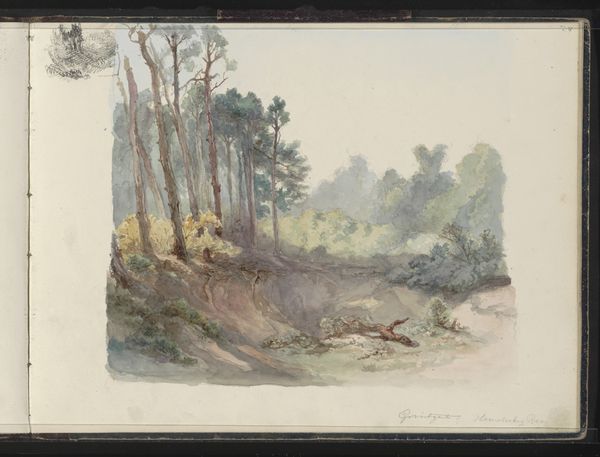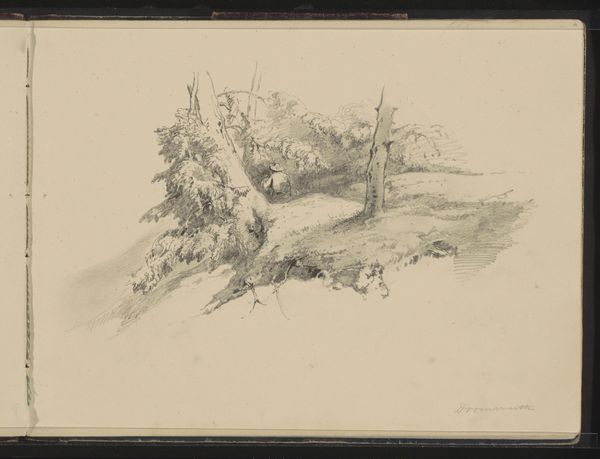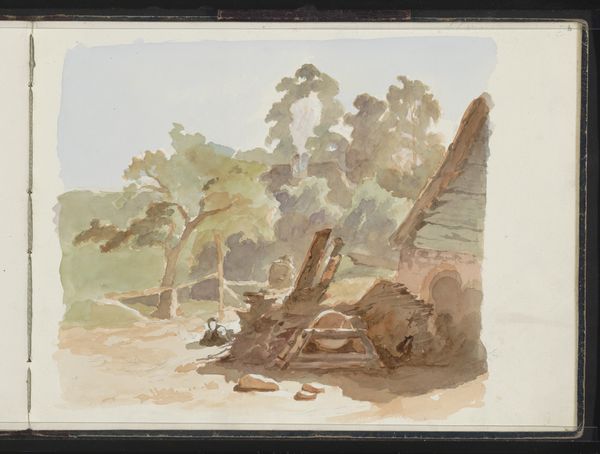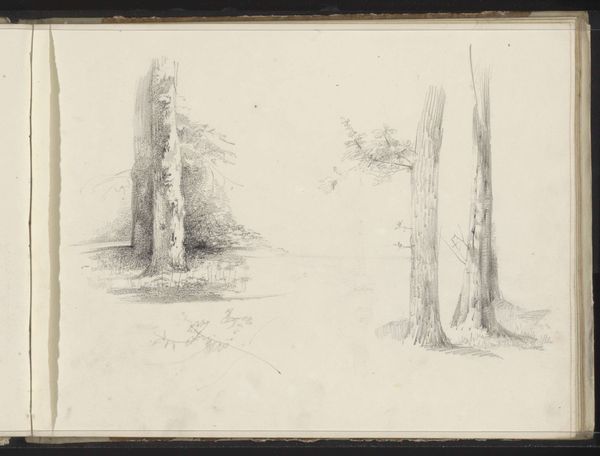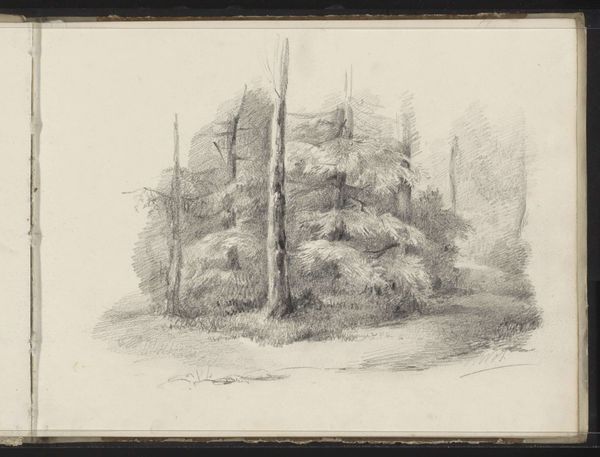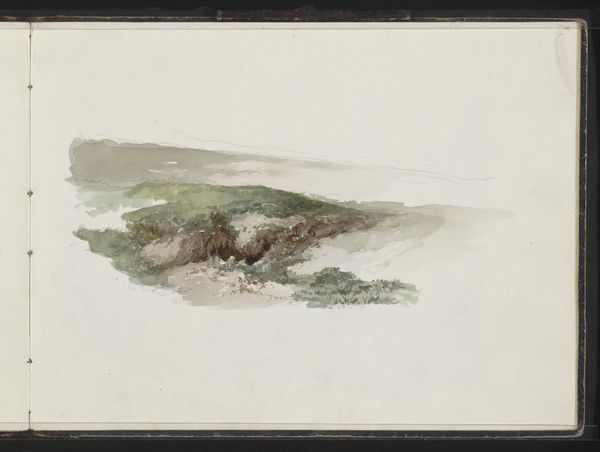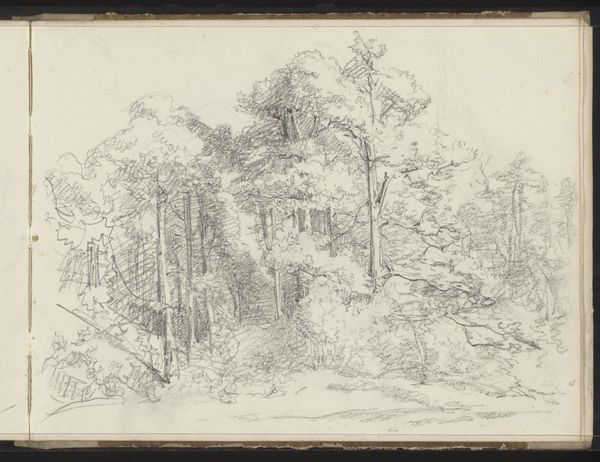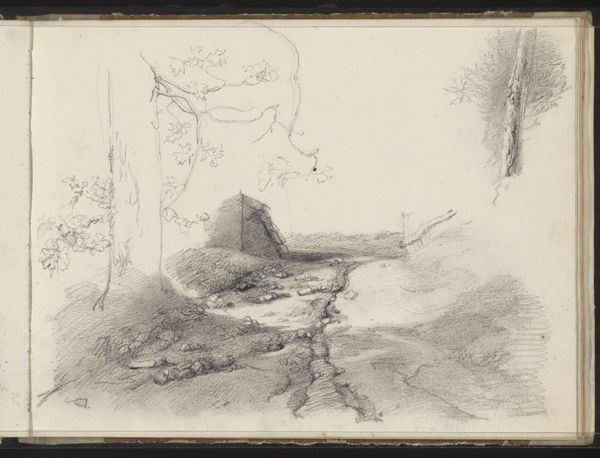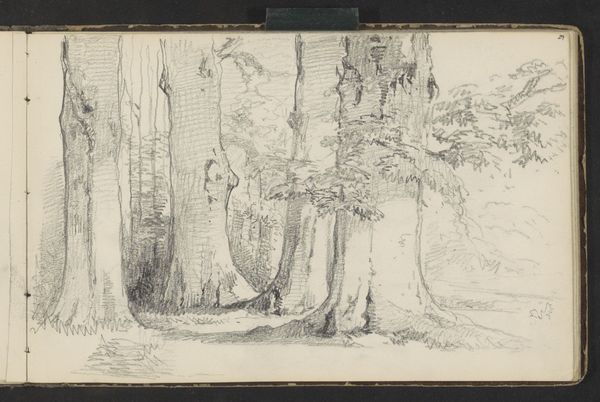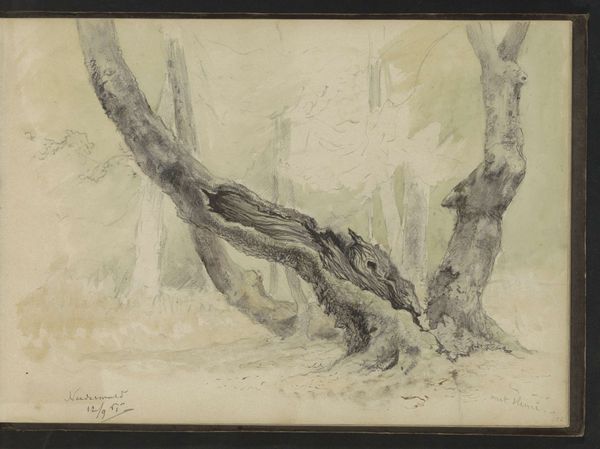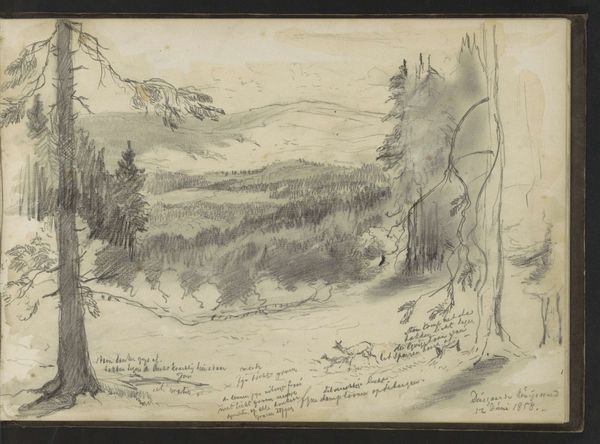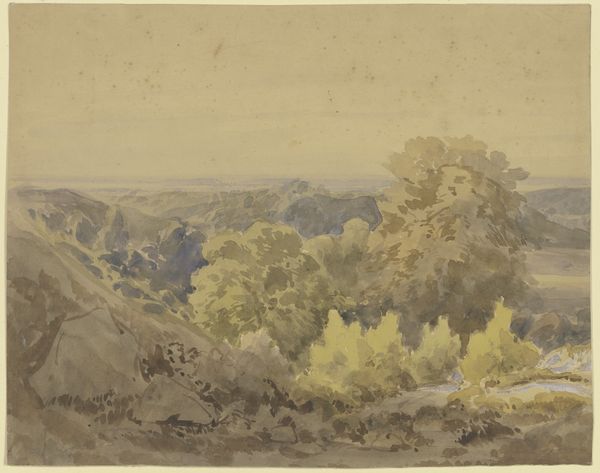
Copyright: Rijks Museum: Open Domain
Curator: Looking at Maria Vos’s "Bomen begrensd door een hek op landgoed Hoog Oorsprong," dating from around 1864 to 1865 and held at the Rijksmuseum, one is struck by the soft washes and the delicate interplay of light and shadow. Editor: Yes, there's a subdued, almost melancholic quality to the piece. The composition seems carefully orchestrated, the way the trees frame the distant field. I can almost smell the damp earth. Curator: Vos, often associated with Romanticism, used plein-air techniques which speaks to the labor involved, working directly from nature. The application of watercolor here, the control, signifies a skilled craftsperson mastering the medium. Editor: Precisely. Hoog Oorsprong was, I believe, a significant estate near Oosterbeek. Images such as these were instrumental in constructing ideas around landscape ownership and national identity within Dutch society. Consider also how landscapes in this era reinforced bourgeois values through ownership and display. Curator: Absolutely. And how the fence itself acts as both a visual barrier and a material representation of ownership, dividing nature from cultivated land, wild from tame, raw materials for the use of the Dutch economy. Editor: And the romantic sensibility prevalent at the time also encouraged a fascination with, and perhaps an idealization of, rural life, offering an escape from rapid industrialization and its social tensions for those who owned estates. Curator: Vos' choice to depict the trees in such a prominent manner, partially obscuring the view, perhaps is questioning or softening this perception, highlighting the power and persistence of nature itself. Editor: The very act of a female artist engaging with plein air painting during this time also carries social significance. While often perceived as a harmless pastime, artistic creation can act as an opening within these societal structures and offer insights that critique its established customs. Curator: Indeed, exploring that relationship is what makes this work compelling even now. Editor: Agreed, considering these layered influences deepens the understanding and value of this piece.
Comments
No comments
Be the first to comment and join the conversation on the ultimate creative platform.
